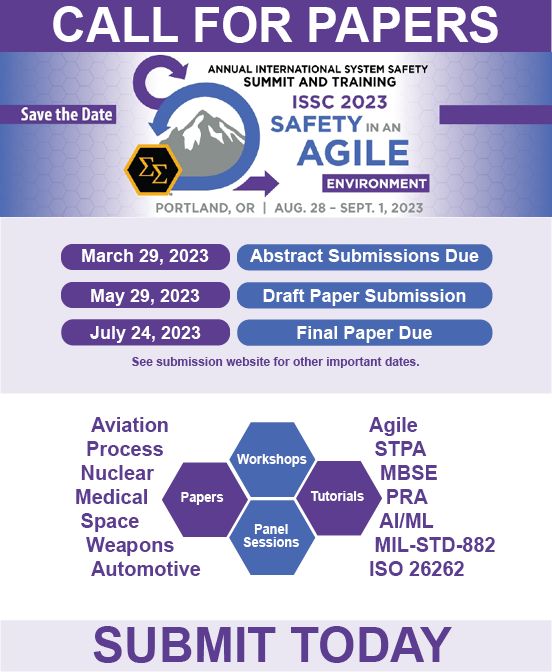Model Based Functional Safety – How Functional Is It?
DOI:
https://doi.org/10.56094/jss.v57i2.192Keywords:
MBSE, MBFS, functional safety, SysML, MediniAbstract
As the engineering world embraces Model Based System Engineering (MBSE), the system safety discipline should also enfold and support MBSE methodology and approaches. The need for Model Based Functional safety, as part of the established system safety and software safety process, is becoming apparent due to existing and developing system design complexity. This paper is intended to show how valuable Model Based Functional Safety approaches can be when evaluating safety signification functions of complex software-intensive integrated systems. Using models can improve the accuracy during the Functional Hazard Analysis (FHA) and can help validate Fault Tree Analyses (FTA) and subsequent system safety analysis (SSA) process and results because the model focuses on the architecture, the physical system, the computer system, as well as the applicable software/middleware/Programmable Logic Devices (PLDs). Model Based Functional Safety may utilize use cases, structural architecture models, activity diagrams, sequence diagrams, functional flow diagrams, and state/mode models to depict safety attributes and to influence explicit safety requirements. SysML may be used to depict critical functions, functional threads, safety features, and expected behavior. Such augmented models (safety models) can also be used to analyze potential off nominal failure conditions and system behavior for various scenarios when conducting FHAs and subsequently detailed system and software safety analyses. This paper will provide an example of the MBSE framework and concepts for tool use in the functional safety analysis and the utilization of attributed models and artifacts to supplement system safety documentation.
References
Hendrix, B., S. Dwyer, & D. West. “Model Based Functional Safety,” Journal of System Safety, 2018.
A-P-T Research, Inc. “Software System Safety & Risk Management for Engineers” Training Courses, 2018.
Department of Defense. MIL-STD-882E Standard Practice System Safety, 2012.
International Electrotechnical Commission. (n.d.). IEC 61508 Functional Safety of Electrical/Electronic/Programmable Electronic Safety-related Systems.
RTCA SC-205; EUROCAE WG-12. DO-178C Software Considerations in Airborne Systems and Equipment Certification, 2012.
RTCA SC-205; EUROCAE WG-12. DO-331 Model Based Development and Verification, 2010.
Office of the Deputy Assistant Secretary of Defense for System Engineering. DoD Digital Engineering Strategy,Retrieved from https://sercuarc.org/wp-content/uploads/2018/06/Digital-Engineering-Strategy_Approved.pdf,2018.

Downloads
Published
How to Cite
Issue
Section
Categories
License

This work is licensed under a Creative Commons Attribution-NoDerivatives 4.0 International License.













